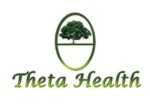5 Easy Steps: How To Live A Healthy Lifestyle (Ultimate Guide)
Published by Guest Writer in Lifestyle · Tuesday 16 Jul 2019
This article is about how to live a healthy lifestyle using nutrition basics for learners, a common sense guide to health and the role of nutrition to restore and maintain a healthy lifestyle. You will be given the use of nutrition knowledge and nutrition basics to maintain and improve your health, to restore your health, to prevent the onset of illnesses and diseases, and to reverse existing sicknesses and disease.
You will be given the basic information on nutrition as a base to further your knowledge in more complex aspects of healthy living. With this basic (definition of basic – forming a base, a fundamental, most important, essential, elementary) information - known and applied - you can guarantee your own health under your own control and responsibility.
- Definition of Health: State of being bodily and mentally vigorous and free from disease. Comes from: (hale – whole (total; complete)).
- Definition of Nutrition: Nutrition is the study of building and maintaining health.
If you want to be and stay healthy, you will need nutrition knowledge. To attain wealth and prosperity, it starts with your health!
STEP 1: How To Live A Healthy Lifestyle - The Ideal State

What is health? What is wellness? Why does one get sick? Why does one get tired, stressed, depressed, put on extra weight and become obese, have joint pains, poor concentration, allergies, diabetes, heart diseases, eczema, poor immune system with colds, flu’s and post nasal drips, etc?
Sickness, pain, often tired, restless sleeps, hyperactivity, etc. is a non-ideal state of the body, which is normally created from a poor or lack of knowledge and use of NUTRITION basics. To regain and maintain health and stay healthy, one needs to know and apply nutrition.
What is nutrition? It is the study of health. Therefore, if you want to be healthy and well, some basic knowledge of nutrition will take you back to your ideal state of health.
Your body is in its ideal state when you have an abundance of energy, you are always alive, are happy, you have peaceful sleeps, are never tired, the body is at its ideal weight, no pains and can cope with any stressful situation. You are able to take on any tasks with enthusiasm and are living a healthy active lifestyle achieving your goals. You have no need or cravings for drugs and alcohol to reach that state.
What are the basics of nutrition that you should know for you to gain control of your own health and bring your body back to its ideal state?
First of all you should realise that if the condition of your body is not in its ideal state and if it carries on that way, you are moving into more and more pain and will end up dying in pain.
- DECIDE you would rather live and in the future die without pain and that you can get your body back to its ideal state.
- DECIDE there is a need to change your eating habits before it brings you to ruin, despair and agony in the future.
- REALISE that if you knew your nutrition basics and applied them well, you would be experiencing your ideal state every day resulting in living a healthy and happy lifestyle.
Look at the positive and negative comparisons below to see what your ideal healthy state should be:
- Energetic, Never Tired versus Tired, Fatigued, Exhausted, Lethargic
- Restful Sleep versus Interrupted Sleep, Can't Sleep
- Calm, Relaxed versus Restless
- Focus, Concentration, Good Memory, Think Clearly versus Can't Focus, Can't Concentrate, Poor Memory, Hyperactive, Depressed
- High Immune Count, Low Viral Load versus Low Immune Count, High Viral Load
- Shiny Skin, Muscle Tone versus Dry Skin, Eczema, Psoriasis, Sagging Skin, Muscle Waste
- Regular Bowel Movement versus Constipation, Irregular Bowels
- Right Weight versus Overweight, Underweight
- Free of Pain versus Period Pains, Joint Pains, Migraines, Inflammations
- Sexually Active versus Impotence
- Normal Sugar Levels versus Diabetes
- Normal Blood Pressure versus High Blood Pressure, Low Blood Pressure, Anaemia
Your Path to Living a Healthy Lifestyle
Look honestly and ask yourself: Are you experiencing your ideal state? If not, then maybe there is something for you to learn that can take you to the ideal state. DECIDE you will seek the knowledge that will guide you to your path of healthier living. Have you decided to walk that path? Good!
You are now ready for the NEXT STEP...
VIDEO: Healthy Lifestyle Hacks by Dr. Berg (PART 1)
STEP 2: For Healthy Living, Balance Your Acid and Alkaline Foods
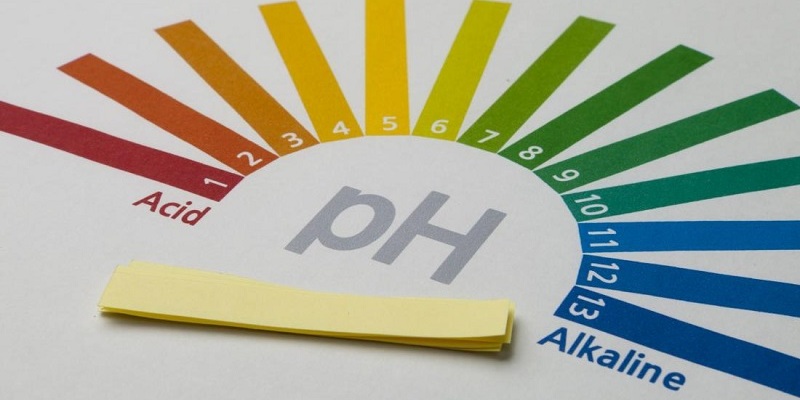
Compare your body to a swimming pool. If the acid / alkaline ratio is out of balance, your pool will be green and all types of existing germs will be able to grow. So if your body is like a green pool; all existing germs, viruses and parasites in your body will be able to grow and will feed itself from your body parts.
When the body is in an acidic environment (green pool condition), diseases thrive; diseases such as arthritis, gout, eczema, osteoporosis, high cholesterol, heart disease, kidney and gall stones, asthma, allergies, AIDS, etc. When your body is in balance and is a “blue pool”, no germs can live in your body and your body can now rest to rebuild itself and has the nutrients to build your system and gives your energy levels back. Only then will healing occur.
Therefore you have to balance the acid / alkaline ratio of your body to live a healthier life and feel better. You can see from the lists below of the different types of acid and alkaline foods there are to help balance your body's acid / alkaline state.
A List of Acid and Alkaline Foods
Convert your diet to 80% alkali residue foods / 20% acid residue foods.
- Definition of Residue - after foods have been used and processed in the body (metabolised), the left over after metabolism is known as residues or ash. The foods either release acid or alkaline residues or ash.
Common Acid Residue Foods
Bacon, Beef, Blueberries, Bran (wheat), Bran (oat), Bread (white), Bread (whole wheat), Butter, Barley grain, Cheese, Chicken, Cod fish, Corn (mealies), Corn oil, Corn syrup, Corned beef, Cranberries, Eggs, Flour (white), Flour (whole wheat), Haddock fish, Lamb, Lentils (dried), Lobster, Milk (cow’s), Macaroni, Oat meal, Olive oil, Oysters, Peanut butter, Peanuts, Peas (dried), Plumbs, Pork, Prunes, Rice (brown), Rice (white), Salmon fish, Sardines fish, Sausage, Shrimp, Spaghetti, Sugar (white and brown), Sunflower seeds, Turkey, Walnuts, Wheat germ, Yoghurt.
Common Alkaline Residue Foods
Almonds, Apples, Apricots, Avocados, Bananas, Beans (dried), Beet greens, Beet, Blackberries, Broccoli, Brussels sprouts, Cabbage, Carrots, Cauliflower, Celery, Chard leaves, Cherries (sour), Cucumbers, Dates (dried), Figs (dried), Grapefruit, Grapes, Green beans, Green peas, Lemons, Lettuce, Milk (goat), Millet, Molasses, Mushrooms, Melons, Onions, Oranges, Peaches, Pears, Pineapple, Potatoes (sweet), Potatoes (white), Radishes, Raisins, Raspberries, Sorghum (maltabella, stone ground), Soy beans (green), Spinach (raw), Strawberries, Tangerines, Tomatoes, Watercress, Watermelons.
Ensure that your diet is predominantly high-water content foods that are fresh and organic. Supplementation with trace minerals is also advised. A CORRECT Acid / Alkaline diet is the first step to healing and restoring your health.
Viruses and bacteria can only live and grow fast when the acid level is out. At the correct balance, viruses and bacteria cannot live or multiply. Sickness is continued when the balance is out as hormones, vitamins, minerals and foods cannot be used by the body to repair it, it cannot fight the growing germs and cannot bring it back to health.
The correct balance gives one continuous energy levels, and fast healing occurs!
You are now ready for the NEXT STEP...
VIDEO: Healthy Lifestyle Hacks by Dr. Berg (PART 2)
STEP 3: For a Healthier Life, Remove Junk Food From Your Diet
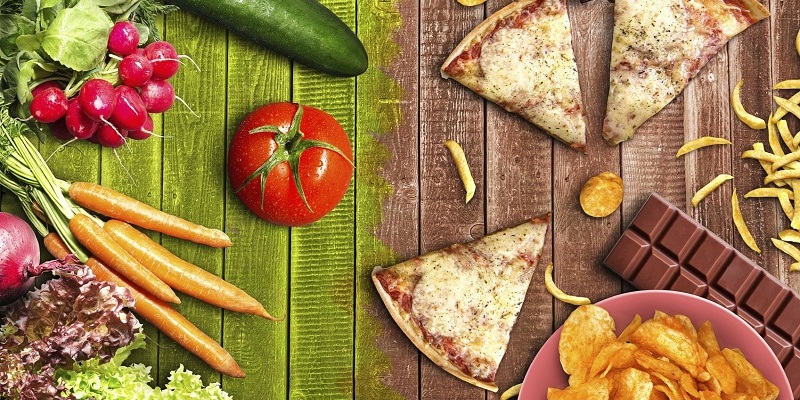
Get off junk foods and replace them with the correct foods! Junk food or fast food are depleted of nutrients and adds a lot of stress to your body and eats up all your energy. Here is a list of junk food and what to replace with:
Sugar and sugar rich foods - such as jam, jellies, candies, rich desserts, and all package mixes and sweet bakery products; sweet gelatine desserts; prepared puddings.
Cool drinks - imitation fruit drinks; soft drinks, alcoholic beverages, imitation cream (both powdered and liquid).
Too much sugar - a small amount is used for energy and the rest changes to fat. It puts your immune system to sleep. The immune cells (warrior cells) cannot work when there is too much sugar in your body and this allows the germs to grow faster and can keep you sick for a long time.
- Alternative - cut out or reduce your sugar amount. Use honey, fructose, stevia or xlitol for sweeteners.
WARNING - sweeteners with aspartame are toxic and can make diabetes conditions worse.
Refined carbohydrates digest into sugar (glucose) too fast and give you too much glucose at one time - some is used for energy and the rest turns to fat.
- Alternative - seed loaf or Low GI bread, brown flour, muesli with rolled oats (for cereals).
Refined oil - (sunflower or canola oil, triple refined) and margarine, known as hydrogenated fats (chemically extracted oils) and foods cooked in such fats like potato chips, cocktail snacks and French fries; hydrogenated peanut butters; processed cheeses; causes the onset of heart diseases, diabetes, arthritis, gout and skin problems (eczema, dry skin, patches, pimples and acne).
- Alternative - use extra virgin olive oil, butter, butter ghee, or palm olein oil.
Mealie meal - all that is left after processing the mealies is carbohydrates, which contributes to weight gain, obesity and tiredness. The mealies in packets on the supermarket shelves are now known as Refined Carbohydrates.
- Alternative - eat raw or boiled mealies, or dried mealies and stone crushed.
Rice - Parboiled rice and white rice are poor in nutrients.
- Alternative - Use wild rice, health rice or brown rice.
Start to remove these junk foods in your diet, replace them with proper nutrient rich foods and you will start to feel more energy, become more stable and healthy - physically and mentally.
You are now ready for the NEXT STEP...
VIDEO: Healthy Lifestyle Hacks by Dr. Berg (PART 3)
STEP 4: Change Your Lifestyle Habits, Eat A Healthy Balanced Diet
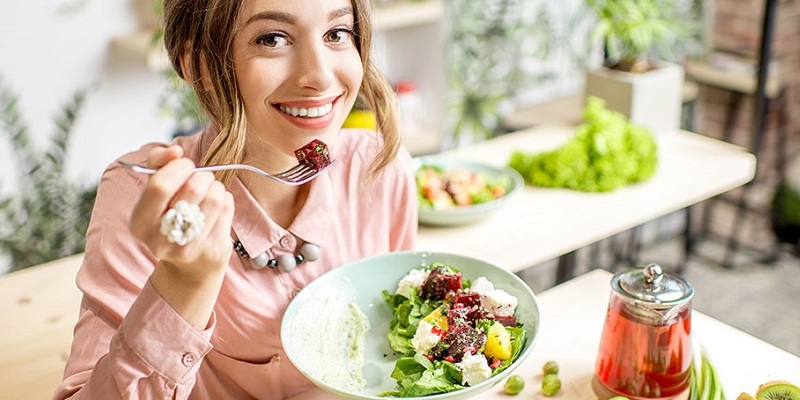
If you want to live a healthy lifestyle you will need a balance diet. A balanced diet is when all the nutrients are present in every meal. Those nutrients are known as:
- Proteins
- Essential Fatty Acids
- Vitamins
- Minerals
- Trace Minerals
- Carbohydrates
- Fibres
- Water
Ideally you should have 6 meals a day, but you should first work towards 3 meals a day and snacks in between with breakfast being the biggest meal and dinner the smallest.
1. Proteins
- Protein: protein comes from Greek “proteios” prime, “protos” first.
Our bodies are made up largely of protein - the skin, muscles, organs, immune (warrior) cells, nails, hair, brain, base of bones. Only when protein is supplied can each cell function normally and keep itself in constant repair. With adequate protein intake, energy is readily produced and maintained.
A lack of proteins causes hair to break, nails break and peel, muscles lose their elasticity (ageing and wrinkles, and muscle waste). Lack of protein prevents the production of enough warrior cells for the immune system to combat the germs and viruses, allowing the immune system to become compromised.
Superior sources of protein - whey protein, eggs, fresh milk, liver, kidneys, buttermilk, cheese, soybeans and powdered yeast (brewer’s or Torula Yeast).
Excellent protein sources - meats, fish, fowl (chicken, duck and turkey).
Fair sources - nuts, beans, peas and grains (mealies, sorghum, millet, beans, samp, brown rice, chick peas, lentils, dholl) - Fair sources proteins need to be consumed together with other fair proteins to get the full benefits and obtain full absorption; otherwise they don’t get absorbed, goes to waste and also make gas.
2. Essential Fatty Acids (EFA) Omega 3 and 6 Oils
Our cells, which make up the structure of our body, are made up of a balanced combination of Proteins and Oils (EFA).
Essential Fatty Acids helps prevent the hardening of the blood vessels and reduces high blood pressure. It is needed by the nerves and brain for normal functioning and for improved concentration, memory and focus. It helps prevent excessive fat and cholesterol and is essential before cholesterol and fats can be used. It prevents swelling and pains in the joints.
Lack of EFA the hair becomes dry and forms dandruff, the skin becomes thick, dry and scaly and eczema and psoriasis are formed.
Refined Oils - (refined sunflower and canola) and margarine interrupt the correct building of the cells resulting in illnesses such as diabetes, heart diseases; blockages in the blood vessels (heart attacks or thrombosis or varicose veins), irritability, poor concentration and lack of focus.
Sources of Essential Fatty Acids (EFA) - almonds, sunflower seeds, sesame seeds, pumpkin seeds, pecan nuts, macadamias, nuts, wheat germ, avocados, mayonnaise. Avoid cashews and Brazil nuts (rich in hard fats). EFA is also available in oily fish such as salmon, tuna, sardines, pilchards and trout. You can also get it from natural cold-pressed vegetable oils (sunflower, flaxseed, peanut, sesame and pumpkin).
3. Vitamins , 4. Minerals and 5. Trace Minerals
Vitamins and minerals are essential to do all chemical reactions in the body.
- They help to burn glucose into energy.
- They help the proteins and essential fatty acids to work together to build new muscles, skin, hair, blood, blood vessels, etc.
- They help to put calcium in the bones.
- They help to prevent colds and flu and infections.
- They help feed the nerves, so reduces stress and allows one to sleep peacefully.
- They help to reduce muscle cramps.
- They help to fight germs and viruses.
Best sources of vitamins and minerals - from fruits and vegetables that are grown organically and whole grains. In every meal, the amounts of vegetables should be about 70% of your plate. If you cannot obtain organic or home grown fruits and vegetables and whole grains, you will need to use supplements.
Foods grown with fertilizers normally do not absorb enough minerals from the soil which makes them poor in vitamins and minerals content, hence the need for supplements.
The body can produce its own B vitamins. They are normally produced by the good bacteria (acidophilus) in the intestines. Acidophilus is often destroyed by antibiotics, so it needs to be replaced with a probiotic or lots of yoghurt.
NOTE: Vitamins and minerals supplements should not be taken alone. They work in balance. Too much of one vitamin alone can cause other vitamin deficiencies.
6. Carbohydrates and 7. Fibres
Best sources of carbohydrates and fibres - are from whole grains (beans, lentils, chickpeas, dholl, brown rice, barley, fresh or dried mealies) and whole grain cereals (not refined), fruits and vegetables.
Carbohydrates release glucose into the blood stream. A steady supply of glucose obtained from carbohydrates is most important, as this will maintain your energy levels throughout the day. Glucose converts to energy and such energy keeps you awake, alive, energetic, and gives you full concentration and focus. It keeps you relaxed and also allows you to have the needed energy if you are doing sports or need that extra time span of concentration to study for exams.
Fibres in the whole grains, fruits and vegetables help to control the release of glucose. Without fibres, too much glucose is released and this makes one become hyperactive and tired and lack focus and concentration. The extra glucose that is not used for energy becomes fat and makes one put on weight leading to obesity. Fibres are also used to remove waste from the intestines. It acts as a broom to sweep away the waste and prevents waste from fermenting or rotting.
8. Water
It is advised to consume at least 1 litre of water daily. Water helps to keep your system clean, to wash away excess toxins and allows the body to balance itself so it does not have an unbalanced acid / alkaline ratio.
Digestion: How It Affects a Healthy Living and How to Improve It
If you find yourself bloating, having acid reflux or producing gas, it is a sign of poor digestion. Your foods are not being digested properly and are rotting or fermenting in your digestive system.
Enzymes are essential to break down the foods so the body can use them. Take digestive enzymes supplements for a while with every meal to allow your body the time to make its own enzymes.
Alternative - sprouted seeds, pineapple or pawpaw seeds for natural digestive enzymes.
Avoid ant acids - it neutralizes the stomach acid which results in undigested foods.
Antibiotics - destroys the good bacteria in the intestines. Good bacteria control the growth of bad bacteria (commonly known as candida). They also help with good digestion. When candida growth is not controlled, it damages the intestinal walls by making holes in them and the waste in the colon seeps into the blood stream causing allergies, asthma, post nasal drip. It is also the cause of thrush. Use a good probiotic.
Apple Cider Vinegar and Honey (raw) are better replacements to drinking tea and coffee. 2 tsp of Apple Cider and 2 tsp of honey in a glass of water 3 times a day will help with the healing process, allows your body to have a peaceful rest, will remove calcium deposits in the joints and heart which helps to relieve joint pains. It is good after a meal to assist and improve digestion. It also helps remove alcohol and sugar cravings.
You are now ready for the NEXT STEP...
VIDEO: Healthy Lifestyle Hacks by Dr. Berg (PART 4)
STEP 5: How to Live A Healthy Lifestyle and Prevent Diseases
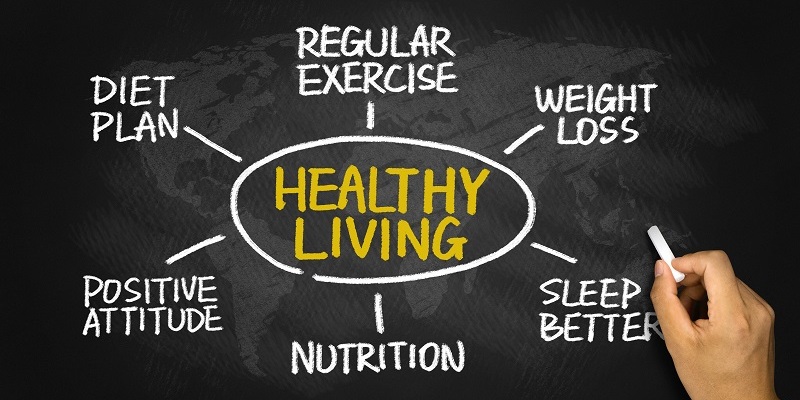
Before engaging in reversing illnesses and preventing diseases, the following remedies can only work when the body is:
- At a balanced acid / alkaline state.
- Free from junk foods in the diet.
- All meals are balanced (correct balance of proteins, oils, vitamins, minerals, trace minerals, carbohydrates, fibres and water).
- A minimum of 3 meals a day with breakfast the largest meal and dinner the smallest meal.
How to Prevent Joint Pains, Arthritis, Gout, Allergies, Asthma, Post Nasal Drip, Eczema, Colds and Flu
The above symptoms are from weak, exhausted or starved adrenal glands. Feed the adrenal glands with extra omega 3 oils, vitamin C and vitamin B5.
Take Immunity Booster (contains the correct balance of vitamin C and vitamin B5), Cal Mag with Potassium, Omega 3 oils, a good multi-vitamin and mineral and Astragalus and Echinacea herbs or Sutherlandia herb or Devil’s Claw herb for gout.
How to Prevent Allergies
Allergies come from undigested proteins in the blood, which should never happen. If you are getting an allergic reaction, take extra digestive enzymes on an empty stomach so the enzymes digest the foreign proteins in the blood.
How to Prevent Diabetes
Take Cal Mag Supplement with Potassium, Omega 3 oils, Chromium (or cinnamon), 25mg of vitamin B6 and a good multi-vitamin and mineral.
How to Prevent Heart Disease and Cholesterol
Eat lots of broccoli, cabbage, cauliflower, onions and garlic to clean up the liver. Liver produces lecithin which balances cholesterol levels.
Take Calcium Magnesium Supplement with Potassium and Immunity Booster, Omega 3 Oils, 2 tablespoons of lecithin granules and a good multi-vitamin supplement.
NOTE: the body produces 3000mg of cholesterol daily. The maximum amount of cholesterol obtained from fatty food one can consume is 800mg. The brain and nervous system need cholesterol.
How to Prevent High Blood Pressure
Blood pressure is usually from excess salt (out of balance of salt and potassium). The kidneys then trigger the blood pressure. Balance the salt by adding potassium to your diet, or eat potassium rich foods and reduce salt intake.
How to Prevent Weight Gain and Obesity
Weight gain happens when there is too much sugar (glucose) at one time in the blood stream. A small part of the glucose is used for energy and the rest is changed into fat. In this condition your body is in “Fat Making Mode”.
With a healthy balanced diet and the correct supplements as listed below, you can change your body in “Fat Burning Mode”. Fat is used only to convert into energy. So the need for exercise is advised so the body can use the fat to make energy during exercise.
Take Immunity Booster and Cal Mag with Potassium, Omega 3 Oils and a good multi-vitamin and mineral.
Fat burners will only work when the body is supplied with the above supplements and the diet is balanced.
Warning: DO NOT miss meals or starve yourself. Missing meals or starving slows down the body. The body does not use up all the glucose from the meal and the remaining glucose converts to fat and increases weight.
How to Prevent Cramps, Restless Sleep and Tiredness
Cramps are from a lack of potassium that has been sweated out or lost because of excess salt intake, and from a lack of magnesium that allows extra loss of potassium. Potassium is also lost from drinking alcohol which speeds up the loss by 5 times.
Restless sleep and tiredness occurs when the body is not resting when sleeping and it depends on feeding the nerves with Calcium and Magnesium.
Apple Cider Vinegar and Honey helps the body change from stress mode to rest mode while sleeping. Also take Calcium Magnesium with Potassium.
How to Prevent Concentration, Memory and Focus Problems
For concentration, one needs extra Vitamin B1, B Complex, Potassium and Omega 3 base.
Eat oily fish 3 times a week and lots of nuts and seeds as listed in the section Essential Fatty Acids. Balance it with good proteins, carbohydrates that contain fibres to give you a steady supply of glucose. Glucose then turns to energy in the brain and gives you mental sharpness and alertness.
How to Prevent Liver and Kidney Problems
A balanced meal, apple cider vinegar and honey or fresh lemon and honey and lots of water is the best form of detox for maintaining a healthy lifestyle.
For liver and kidney detox, take a combination of the herbs Dandelion, Milk Thistle and Curcumin (Tumeric extract).
How to Prevent Ulcers
Take ½ tsp Immunity Booster after each meal, 5000iu of Vitamin A daily and acidophilus (probiotics). Also use fresh citrus fruit, eggs and yoghurt or milk. Avoid ant acids.
How to Prevent Constipation and Irritable Bowel Syndrome
Usually this can be caused by a lack of Potassium, Magnesium and Vitamin B6 which causes the intestinal muscles to cramp and does not cause movement of the bowels.
Take Cal Mag with Potassium. If constipation persists, also take 100mg of Vitamin B1 Thiamine.
The best fibres to clean and detox the colon is Psyllium Husks (NOT Bran Flake).
Consult a natural health doctor for advice on colon detox, colon cleansing and removing parasites and candida (which causes thrush).
Meal Suggestions to Help Prevent Common Illnesses
For people on the go
Have a pack of mixed nuts (macadamia, almonds, sunflower seeds, pumpkin seeds and/or pecan nuts) with dried fruits (raisins, dates, cranberries, mango, etc) in the car or at your desk and eat them through the day.
The combination is a balance of natural proteins, good oils, carbohydrates, vitamins, minerals and fibres. Have fresh fruit if possible in the car and eat them as you are driving. Better alternatives than cool drinks and junk food.
Breakfast and Lunch Box Suggestions for Maintaining a Healthy Lifestyle
Breakfast
- Muesli (which contains rolled oats) with nuts, seeds and dried fruits with extra powdered milk or whey protein.
- Boiled eggs on a seed loaf or Low GI bread with cottage cheese.
- Fresh fruit (choice of pineapple, pawpaw (and some seeds), mango, banana, apple, (berries) blended with yoghurt, soya milk or whey protein and seeds.
- Cook a mix of rolled oats, millet or ground sorghum, barley and polenta for 10 to 15 minutes, then add milk and honey to taste – this will give you energy for long hours without feeling hungry.
- Apple Cider Vinegar and Honey in a glass of water instead of a cup of tea, coffee or chocolate.
Lunch Box
- 2 of your favourite fruits or carrots and celery.
- Seed loaf or seed bun or Low GI bread with butter, mayonnaise, cottage cheese and roast meat or chicken (try to avoid polony, hams).
- Yoghurt – if possible without sugar, but instead with honey or fructose.
- Water or diluted fruit juices.
- Slice of cheese and butter on savoury crackers.
- Protein bar which has at least 10g or more protein.
- Mixed nuts and seeds or seed bar with honey.
Congratulations!
You now have some basic knowledge on nutrition and how to live a healthy lifestyle. All you need to do is start using the nutrition knowledge you have learned and you will be on the path to living a healthier life and feel better.
Do you have a particular health problem?
Search our shop by health concern to find a natural health product for you.

